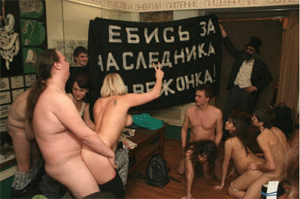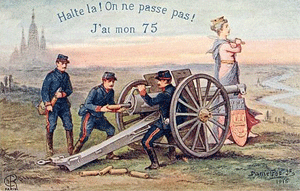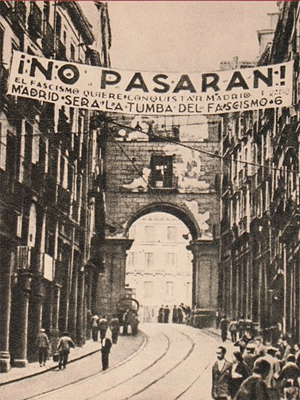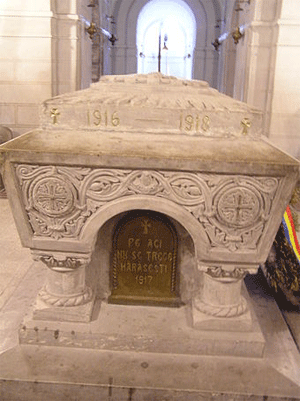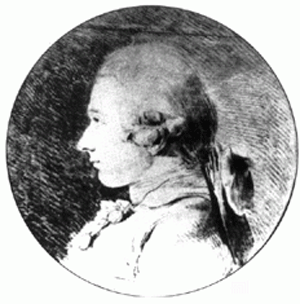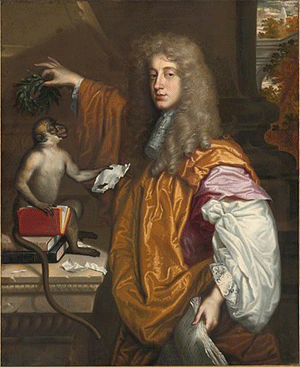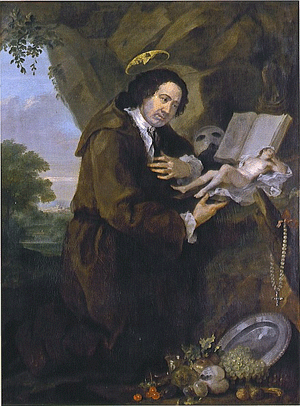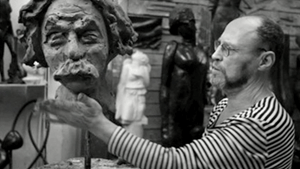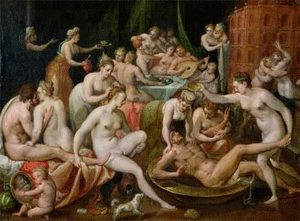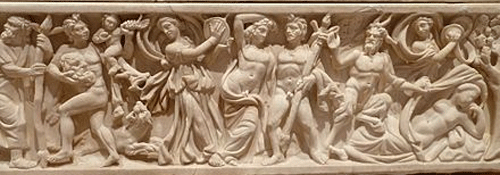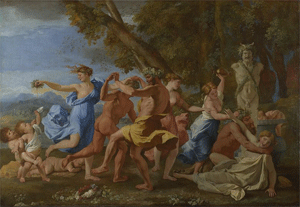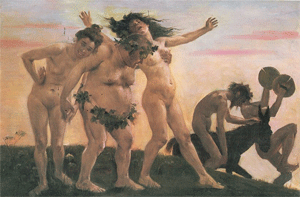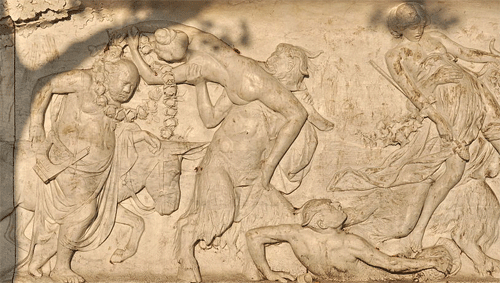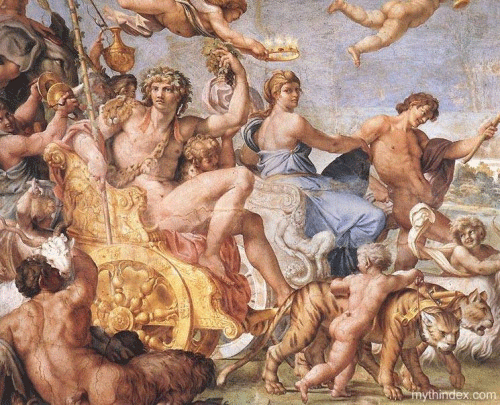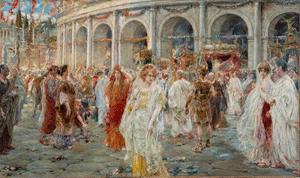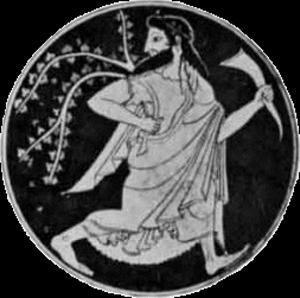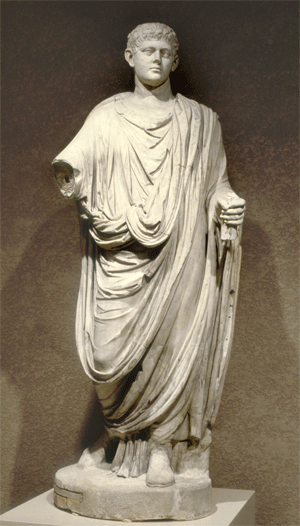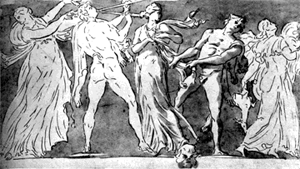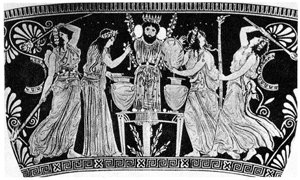An Essay on Woman, in Three Epistles [Member of the Hellfire Clubby John Wilkes
NOTICE: THIS WORK MAY BE PROTECTED BY COPYRIGHTYOU ARE REQUIRED TO READ
THE COPYRIGHT NOTICE AT THIS LINK BEFORE YOU READ THE FOLLOWING WORK, THAT IS AVAILABLE SOLELY FOR PRIVATE STUDY, SCHOLARSHIP OR RESEARCH PURSUANT TO 17 U.S.C. SECTION 107 AND 108. IN THE EVENT THAT THE LIBRARY DETERMINES THAT UNLAWFUL COPYING OF THIS WORK HAS OCCURRED, THE LIBRARY HAS THE RIGHT TO BLOCK THE I.P. ADDRESS AT WHICH THE UNLAWFUL COPYING APPEARED TO HAVE OCCURRED. THANK YOU FOR RESPECTING THE RIGHTS OF COPYRIGHT OWNERS.
Epistle I.AWAKE! my C …. have all things beside,
To low ambition, and to Scottish pride:
Let us (since life can little more supply,
Than, just to fight a duel … and to die)
Expatiate, freely, upon Woman-kind;
And trace, the mighty errors of her mind;
Mark where her thousand weeds, promiscuous, shoot;
And, fearless, cultivate forbidden fruit:
Together, let us trace this ample field;
Try, what the open, what the covert yield;
The artful tricks, and pretty flights explore,
Of ev’ry coy, and every willing whore:
Eye, all her walks; shoot folly, as it flies;
Notice her actions, as to fight they rise:
Blame, where we must; but laugh, where e’er we can;
And shew, that Woman is the Foe of Man.
Of God above, or Woman here low,
What can we reason, but from what we know?
Of her, what see we but her station here,
From which to reason, or to which refer?
Through worlds unnumber’d though the God be known,
Woman’s acknowled’d only in our own.
Woman, presumptuous! would the reason find;
Why she is form’d so little, and so blind?
But let her first the harder reason guess,
Why she is form’d no blinder, and no less?
Ask of her mother, Earth, why oaks are made
Taller, or stronger, than the weeds they shade?
Woman respecting, what most wrong we call.
May, must be right, as relative to all.
That woman’s helpless, say not … heaven in fault;
Say rather … she’s as perfect as she aught:
Her knowledge, measured to her state and place,
Her time, a moment; and a point, her space.
Heav’n from us all conceals the book of fate,
Or who would wed the woman he must hate?
The girl thy passion dooms a lawful prey,
Had she thy reason, would she sing, and play?
Pleas’d to the last, she yields her virgin charms,
And hugs her dear destroyer in her arms.
Oh! blindness to the future, not to see
Her two worst enemies are, love and thee;
From whom to endless ruin she is sent,
Her fatal passion is her punishment,
Hope springs eternal in the female breast,
Women ne’er are, but always to be blest:
The girls uneasy and confin’d, will run
From dear mamma to us, to be undone.
Lo! the poor Indian, whose untutor’d mind,
With European taste all unrefin’d.
Who never saw or masquerade or play,
Nor shone at court on George’s natal day;
Yet simple nature to her hope has given,
In her dear tawny Lord, an humbler heav’n:
To be, contents her natural desire,
She asks no angel’s wing, no seraph’s fire;
But thinks, she has all blessings in her eye,
Her dusky lover in her company.
Go! wiser thou, and in thy nervous lines,
Where all the strength of composition shines,
Call imperfections to the face of day,
And d…. the needy players who work for pay:
Say, here they rant, and there too much they whine,
Heed not their fears, thy business is … to dine.
Ask, for what end the sparkling brilliants shine?
The woman … ever modest … cries, for mine;
For me the artist tries his utmost power,
And forms, from gems, the artificial flower;
Annual, for me, returning winter comes;
For me prepares ridottos, masks, and drums;
For me, joy gushes from a thousand springs;
And forty-shilling actors soar to Kings;
Chairmen to waft me, boys to light me rise,
And all the pit is wounded by my eyes.
But errs not nature from her kind intent,
When female minds, on mischief ever bent,
Delight to torture where they ought to please.
And yield their own to blast another’s ease?
“No, (tis reply’d) the females have no flaws.
“And too woman, act by gen’ral laws;
“Without exception do what ills they can;
“Their only aim to hurt, to injure mann.”
If the great end be human happiness,
And woman deviates … shall man to less?
As much that end a constant course requires,
Of showers and sunshine, as of their desires;
As much eternal springs and cloudless skies,
As woman, ever temperate, calm, and wise.
If plagues and earthquakes heav’ns design fulfill,
Why should not man o’er woman have his will?
Better for us, perhaps, it might appear,
Were you a mitre’d priest, and I a peer;
But trust me, C …, those, who better know,
Have long determin’d it shall not be so.
Thus all subsists by politics and strife,
And passions are the elements of life.
The gen’ral order, since the whole began,
Is not in woman, but is kept in man.
What would these girls? now upwards will they soar,
And little less than angels, would be more;
Now look around, and just as griev’d appear,
They are not mothers in their fifteenth year:
Made for their use, all creatures will they call;
Say, what their use, had they the powers of all?
Kind to the sex, in rich profusion kind,
Shape, beauty, wit, dame Nature as assign’d;
Shall she then only, whom a wit we call,
Be pleas’d with nothing, if not bless’d with all?
A woman’s bliss, could pride that blessing find,
Is, not to think or act beyond her kind.
No powers of body or of soul to share,
But what her nature and her state can bear,
Why have no women microscopic eyes?
For this plain reason … women are not flies.
Say, what their use, were finer optics giv’n,
To inspect a mite, not comprehend a heav’n?
Cease then, nor rudely let us seem to blame;
Our proper bliss is centred in the dame:
Let us submit, in this our humble sphere,
Content to be as blest as we can bear:
Safe in the hands of one all-charming wife,
Calm let us tread the rugged path of life;
And, spite of truth, in fair conviction’s spite,
Still let us say, and swear, that WOMAN’S RIGHT.
Epistle II.Know then thyself, and make the Sex thy care,
The proper study of Mankind’s the FAIR;
Plac’d in that state – which all who know thee, know
A Politician, Poet, Parson, Beau;
Created half to rise, and half to fall,
Great son of Homer – doating on a doll;
Truth’s friend so fond of female falsehood grown,
The glory, jest, and riddle of the town
Go, wond’rous creature, as Apollo leads,
And mark the Path majestic Milton treads;
The little versifiers teach to write,
Than to thy bottle and thy w… at night.
The wond’ring actors, when of late they saw
A grave Divine explain theatric law,
Admir’d the wisdom of the rev’rend cowl,
And shew’d a C…., as we shew an owl.
Has he who wrote the Rosciad e’er inclin’d
Ten days together to one female mind?
Then might thy friend be constant to his W….,
And PRIVILEGE be pleaded then no more.
Woman to man still yields (and where’s the harm?)
Who keeps her close while she has power to charm;
Then yields her to his fellow-brutes a prey:
And where’s the fault, my friend, in us, or they?
Two principles in human nature reign,
Self-love to urge, and reason to restrain:
Self-love, the spring of motion, acts the soul;
And reason yields to its supreme control:
Great strength the moving principal requires,
Active its task, it prompts, impels, inspires;
Sedate and quiet sense and reason lie;
We yield to passion, and from reason fly.
We seize immediate good by present sense,
And leave to fate and change the consequence;
Thicker than arguments temptations throng,
More pow’rful these, though those are ne’er so strong.
Self-love and reason to one end aspire,
Pain, our aversion, pleasure our desire;
But greedy still our object to devour,
We crop, without remorse, the fairest flow’r:
Pleasure, with us, is always understood,
Howe’er obtain’d, our best and greatest good.
Passions, like elements, though born to fight,
By female pow’r subdu’d, are alter’d quite;
These ‘tis enough to temper and employ,
While what affords most pleasure, can destroy.
All spread their charms, but charm not all alike;
On different senses different objects strike;
Hence different ladies, more or less inflame;
Or different pow’rs sometimes attend the same;
And calling up each passion of the breast,
Each lady, in her turn, subdues the rest.
As man, perhaps, the moment of his breath,
Imbibes the flame which ends not but with death;
The flame, that must subdue the fair at length,
Grows with his growth, and strengthens with his strengths
So cast and mingled too in Woman’s frame,
Her mind’s disease, her ruling passion came.
Imagination plies her dangerous art,
And pours it all upon the peccant part:
Nature it’s mother, habit is it’s nurse,
Wit, spirit, faculties, but make it worse.
We wretched subjects to the female sway,
The tyrant, Woman, one and all, obey;
Who, bent to govern by her own wife rules,
Will, if she finds not, aim to make us fools;
Teach us to mourn our fate, but not to mend;
A sharp accuser, but a helpless friend!
Proud of her easy conquest all along,
She still allays our passions, weak or strong.
Virtuous and vicious every man must be;
Women are neither in a small degree;
The rogue and fool, by fits, is fair and wife,
Women are always what they most despise:
‘Tis but by parts Man follows good or ill;
Woman’s sole sovereign is her own dear will,
While ev’ry man pursues a different goal,
Womans whole aim’s unlimited control,
The faults of men, and their defects of mind,
Afford the highest joy to womankind.
See some peculiar whim each man attend;
See every Woman lab’ring to one end:
See some fit passion ev’ry man employ;
Empire alone affords the Woman joy.
Behold the Girl, by Nature’s kindly law,
Pleas’d with a rattle, tickled with a straw;
Some other bauble gives her youth delight,
A little louder, but as empty quite.
Dress, dancing, balls, amuse her riper age,
And drams and opiates are the toys of age;
Pleas’d with this bauble still, as that before,
‘Till tir’d, she sleeps … and life’s poor play is o’er.
Epistle III.Oh Happiness! to which we all spire,
Wing’d with strong hope, and borne by full desire,
Oh Ease! for which in want, in wealth we sigh,
That Ease for which we labour and we die.
Why should the Female ever have the power,
To tyrannize o’er Man, and to devour?
Why should the wife, the learned, and the fool,
The brave, the rich …. submit to Woman’s rule?
As of the learn’d the cause, the learn’d are blind,
This bids us seek, that shun all Womankind;
Some place the bliss in serving one alone,
Some by a single passion are undone.
Some, sunk to beasts, find pleasure end in pain.
Some, swell’d to Gods … confess all pleasure vain;
Some hold the maxim others wrong would call,
To try all Women … and to doubt them all.
Oh, Sons of Men! attempt no more to rise,
But own the wond’rous force of Woman’s eyes;
Who, big with laughter, your vain toil surveys,
And shews her power a thousand diff’rent ways.
Know all the happiness we hope to find,
Depends upon the will of Womankind.
Nothing so true as Pope, long since, let fall,
“Most Women have no characters at all”;
How many pictures of one nymph we view!
All bow unlike each other … all bow true!
See Sin in state majestically drunk;
Proud as a Peeress, prouder as a punk;
Chaste to her husband, frank to all beside,
A teeming mistress, but a barren bride;
In whose mad brain the mix’d ideas roll,
Of Tallboy’s breeches, and of Caesar’s soul.
Who, spite of delicacy, stoops at once,
And makes her hearty meal upon a dunce.
In Men we various ruling passions find,
In Women … two alone divide the mind;
Those only fixed, they, first or last, obey,
The love of pleasure, and the love of sway.
FINIS.

